Over the last decade or so, the economy of Bangladesh is growing rapidly and the textile and clothing manufacturing industry of Bangladesh is playing a very important role. This industry provides a single source of growth in Bangladesh’s rapidly developing economy. The export of textiles and garments are the number one source of foreign exchange earnings of Bangladesh.
Bangladesh is the 2nd largest apparel exporter of western fast fashion brands. The globalization of garment production has increased the competition between the textile and clothing manufacturing countries. The enhancement of communication systems and networking has played a key role in this development. So, Bangladesh is also facing the same competition. However, there are few key factors that make Bangladesh internationally competitive in textile and clothing manufacture. If you are interested to know the reasons then keep reading this article.
Why Bangladesh Is Internationally Competitive In Textile And Garments Sector
Bangladesh is planning to get middle-income country status by 2021 and the textile and garments sector will play a key role in achieving this target. Bangladesh has set a target of achieving apparel exports worth $50 billion by 2021 and they are on the right track. Bangladesh’s textile and garments sector has many factors that attract global attention. Let’s check them out.
Quick Returns Of The Investment
One of the main reasons investors want to invest in Bangladesh’s garment sector is the quick return of the investment. This is the only sector in Bangladesh that gives returns of the investment in 3 to 5 years. Moreover, globally, Bangladesh is the second biggest apparel exporter so there are huge growth opportunities in this sector. Moreover, China, the leading global apparel exporter of the world is losing ground because of the growing production costs. Therefore; it opens an immense prospect for Bangladesh to seize more market share.
Labor Availability
One of the biggest advantages for Bangladesh in the garments sector is the cheap and vast workforce. This is where Bangladesh’s competitors are lagging behind. The minimum wage of Bangladeshi garments workers is lower than that in China, Cambodia, India, and Vietnam. Moreover, there are lots of private and public universities available in Bangladesh that offers high-quality textile education and produce textile graduates every year. That means there are fresher and skilled young people are adding to this segment. Moreover, favorable government policies, bank facilities, and strong background industries are creating a strong and sustainable base for this sector.
Low Labor Costs
Apart from the labor availability, the low labor cost is also a very important influencer of Bangladesh’s international competitiveness in the Garments sector. India, China, Vietnam, and Cambodia are the main competitors of Bangladesh in the international market. Among these countries, Bangladesh has the lowest labor cost. So Bangladesh can enjoy the benefit of low labor cost and use it as an advantage to beat the international competitors. Here is the labor cost of the top 5 countries of the world:
| Cost | IndiaUSD/month | ChinaUSD/month | BangladeshUSD/month | VietnamUSD/month | CambodiaUSD/month |
| Labor Cost | 160-180 | 550-600 | 100-110 | 170-190 | 180-190 |
| Power Cost | 0.10-0.12 | 0.15-0.16 | 0.09-0.12 | 0.08-0.10 | 0.20-0.25 |
| Water Cost | 16-20 | 55-60 | 20-22 | 50-80 | 70-90 |
The Duty-Free Advantage
Bangladesh has Least Developed Country (LDC) status; therefore, qualifies for duty-free market access or reduced tariff facilities to many developed and developing countries around the world. In fact, Bangladesh enjoys duty-free access to around 52 countries, including countries in the EU, the USA, Australia, Switzerland, Japan, Turkey, Russia, Norway, New Zealand, China, South Korea, Thailand, Malaysia, etc. Moreover, Bangladesh has signed many trade deals with different countries that offer huge business advantages. Some key agreements are:
1. SAARC Preferential Trading Arrangement
2. Asia-Pacific Trade Agreement
3. Bay of Bengal Initiative for Multi-Sectorial Technical and Economic Co-operation Agreement
4. South Asian Free Trade Area Agreement
5. Trade Preferential System among the OIC member states
Technological Advantages
Many global retail brands choose Bangladesh over other countries because over the years Bangladesh garments sector has successfully adapted to the latest technologies and the quality compliance parameters also increased at the same time. Moreover, Bangladeshi manufacturers and exporters have built excellent vertical capacities which make the global brands to ensure more transparency and coordination in their supply chains. The best part is; Bangladesh’s garment sector has adopted the most sophisticated apparel manufacturing and management technologies to attract global brands and international customers. All these results in a substantially high rate of quality achievement in Bangladesh’s RMG sector.
Other Advantages For Bangladesh’s Garments Sector
1. Providing low-cost energy for garments
2. Easily accessible infrastructure like sea road, railroad, river, and air communication
3. Accessibility of fundamental infrastructure
4. FDI is legally permitted for garments industries
5. Moderately open Economy in the Export Promotion Zones (EPZ)
6. GSP under EBA for Least Developed Country applicable for textile and clothing manufacturing goods
7. Improved GSP advantages under Regional Cumulative
8. Duty-Free Excess to the USA
9. Foreign Private Investment (Promotion and Protection) Act, 1980 ensure the security of all foreign investments in Bangladesh
10. OPIC’s insurance and finance agendas operable
11. Protection and safety measures from Multilateral Investment Guarantee Agency (MIGA) is available
12. The adjudication service of the International Centre for the Settlement of Investment Dispute (ICSID) is available
13. Excellent Telecommunications network to enjoy the E-mail, Internet, Fax, ISD, NWD & Cellular services
14. The weakness of currency against the dollar
15. Bank interest@ 7% for financing exports
16. The convenience of duty-free custom bonded w/house
17. Provide support for creating infrastructure accordant according to the investor’s requirement
The Opportunity Of Bangladesh’s Garments Sector
1. EU is willing to establish an industry for knits, including sweaters
2. Bangladesh is on the list of Least Developed Countries so they will enjoy enhancing export trade
3. Skilled technicians are available to instruct and prearranged the garment industries
4. Labor and energy cost are inexpensive
5. Foundation garments for Ladies for the FDI promise
6. Japan occasionally purchase handloom textiles, home furniture, and garments items from Bangladesh so the international market for garments can be expanded with continued progress in quality
Final Thought
The competition in the International textile and manufacture market is increasing every day for Bangladesh. Therefore; sustainable development is very important for the Bangladesh RMG sector. With all the resources available, no doubt Bangladesh will continue to be a major thrust in the global market.

